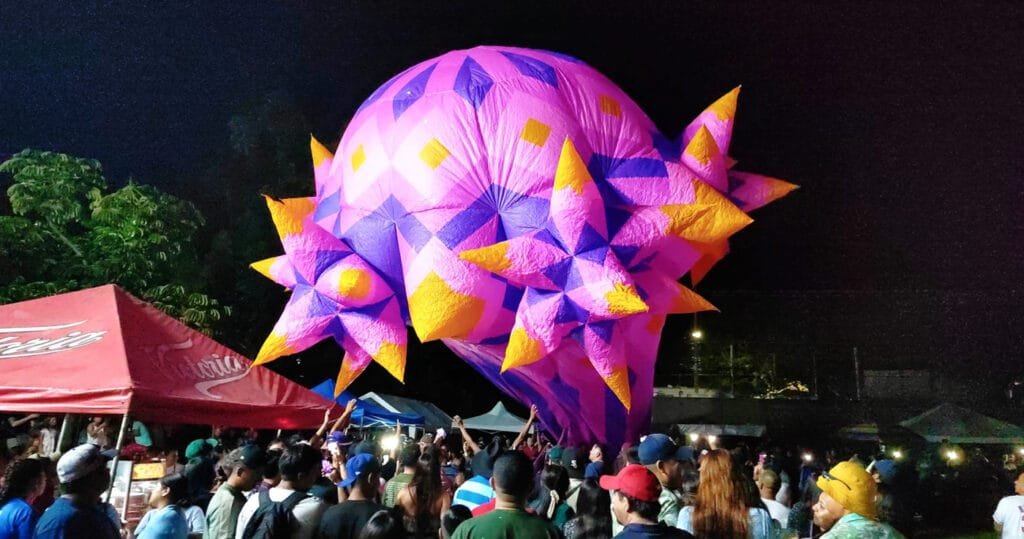Every September, the heart of Ajijic beats in rhythm with tradition. The event many know as the Rebozo Parade in Ajijic has evolved, now proudly bearing a name that honors its community spirit: Usos y Costumbres del Rebozo (“Uses and Customs of the Rebozo”). This celebration, held on the Sunday before September 15th, transforms the town’s main plaza into a stage filled with color, music, identity, and memory. It’s a highly anticipated moment for both locals and visitors, where culture is not just seen but felt in every corner of the square.
In 2025, the event will take place on Sunday, September 14: Usos y Costumbres del Rebozo (Traditions and Customs of the Rebozo) in Ajijic’s main plaza.
Planning a visit to Ajijic in September? Don’t miss this vibrant and unique experience. Discover how to make the most of it by staying at Hotel Casa Blanca Ajijic, just steps from the heart of the tradition.
What Is a Rebozo?
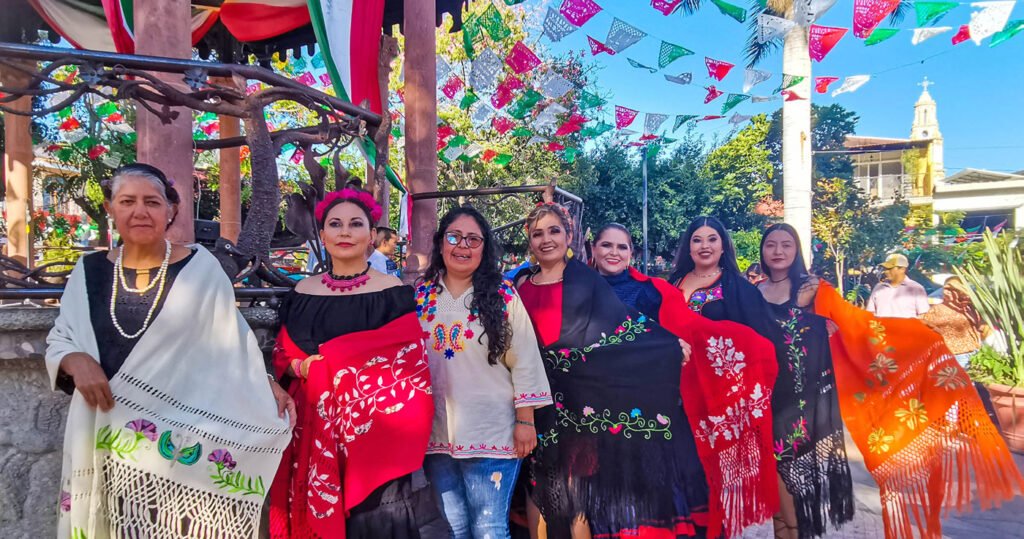
A rebozo is a traditional Mexican garment, rectangular in shape and typically woven on a backstrap or pedal loom. Made from cotton, silk, or wool threads, its length allows it to be wrapped around the body in various ways. The ends, called rapacejos, are often adorned with intricate handmade knots or fringes. More than a functional piece of clothing, the rebozo is imbued with deep cultural meaning, symbolizing femininity, regional identity, heritage, and Mexican pride.
Over time, the rebozo has become an essential part of women’s attire. It’s used to shield from the sun, carry babies, transport goods, and even during religious ceremonies and festivities. Its design varies by region—for example, in Tenancingo, rebozos are often tie-dyed (jaspeado), while Santa María del Río is famous for its delicate silk rebozos known as “de bolita.” This diversity makes the rebozo a rich form of textile art deeply rooted in Mexican identity.
The History of the Rebozo in Mexico
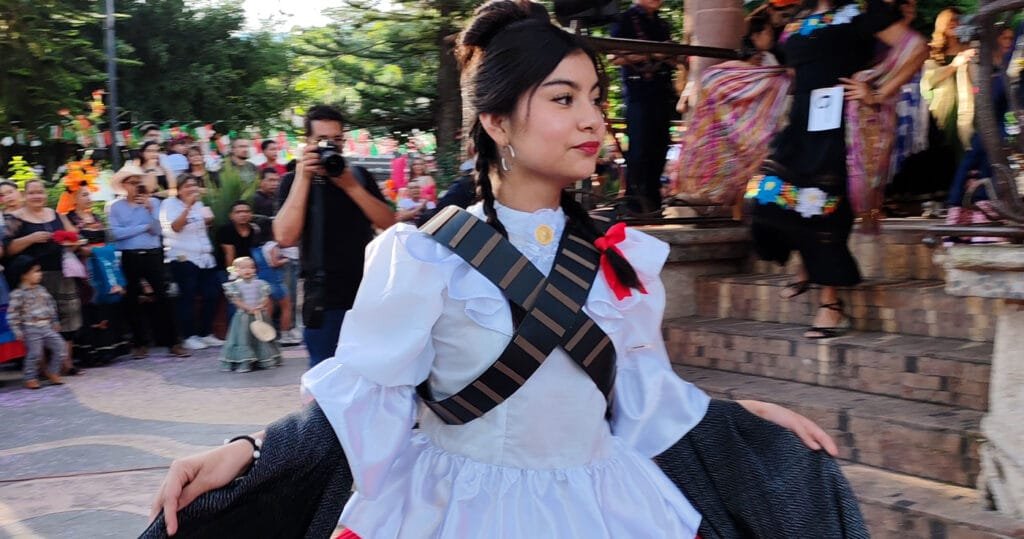
The rebozo traces its roots to colonial times, born from the fusion of Indigenous, Spanish, and Asian influences. It is believed to be a blend of the Indigenous manto, the Spanish mantilla, and Asian textiles brought to Mexico via the Manila Galleon from the Philippines. Since then, the rebozo has become a signature garment of Mexican women.
For centuries, women of all social classes wore rebozos. In rural Mexico, it served as an indispensable everyday tool; in urban settings, it became a fashionable accessory. During the Mexican Revolution, women known as adelitas used their rebozos not only for warmth but also to conceal weapons and messages. In this context, the rebozo became a powerful symbol of resistance, protection, and strength.
Today, the rebozo remains a symbol of motherhood, femininity, and resilience. Often passed down through generations, it is cherished as a keepsake filled with memories. Artisan communities continue to preserve traditional weaving techniques, ensuring that the rebozo endures not just as a garment but as a cultural legacy in constant evolution.
A Tradition Woven with Culture and Mexican Pride
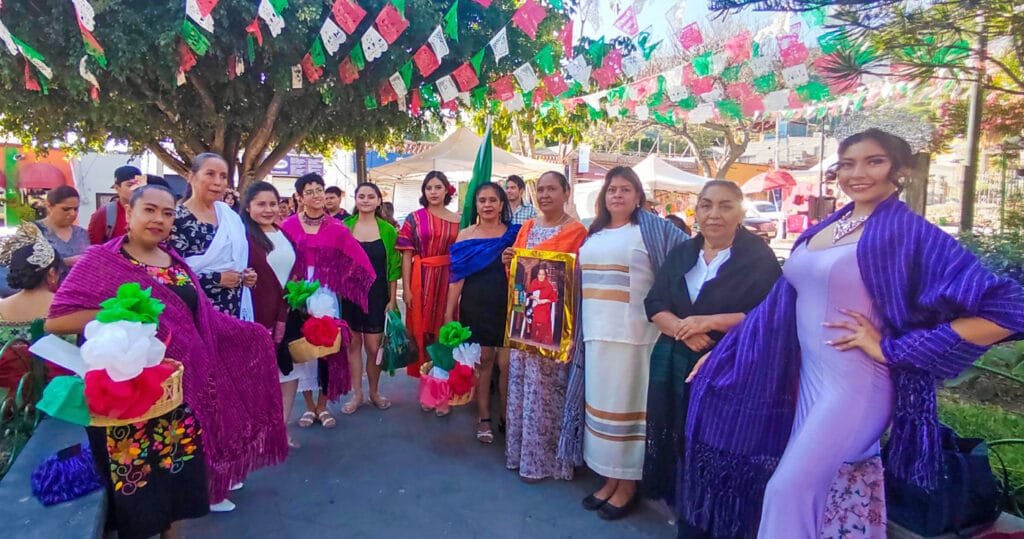
More than a textile runway, this event is a heartfelt tribute to the cultural roots of Ajijic and all of Mexico. Women, teenagers, and young girls parade through the plaza adorned in their finest rebozos, accompanied by mariachis, charros (Mexican horsemen), traditional dancers, and the whimsical sayacos—local masked characters—while the crowd claps, smiles, and joins the festive atmosphere. This is not just a performance—it’s an expression of identity that unites generations in one shared display of national pride.
The rebozo—handwoven and centuries old—is the star of the show. Beyond being an item of clothing, it symbolizes identity, motherhood, labor, resistance, and feminine beauty. To wear a rebozo is to carry history on your shoulders. Each piece tells a unique story—of family, of community, of unforgotten roots. And in Ajijic, this symbolism comes alive in an extraordinary way every year.
Uses and Customs of the Rebozo: A Parade with a Community Soul

Now known as Usos y Costumbres del Rebozo, this event is far more than a visual parade. It is a living expression of Ajijic’s cultural traditions. Women, teenagers, and girls proudly walk through the main square wearing their rebozos, accompanied by mariachi music, charros, dancers, and the enthusiastic cheers of the crowd.
In this setting, the rebozo is not just a garment—it’s a symbol of belonging, strength, and womanhood. Participants carry flowers, flags, and wear traditional attire, while on their shoulders they display authentic textile masterpieces reflecting the diversity and richness of Mexico’s cultural heritage.
Held alongside Mexico’s Independence Day festivities, the parade gains even greater significance. It’s not a conventional fashion show or tourist performance—it’s a genuine community gathering honoring the women who have worn the rebozo across generations and those who now carry on the tradition with pride. The Ajijic plaza becomes the perfect stage to celebrate the living heritage of an entire town.
From Symbolic Textile to Community Event
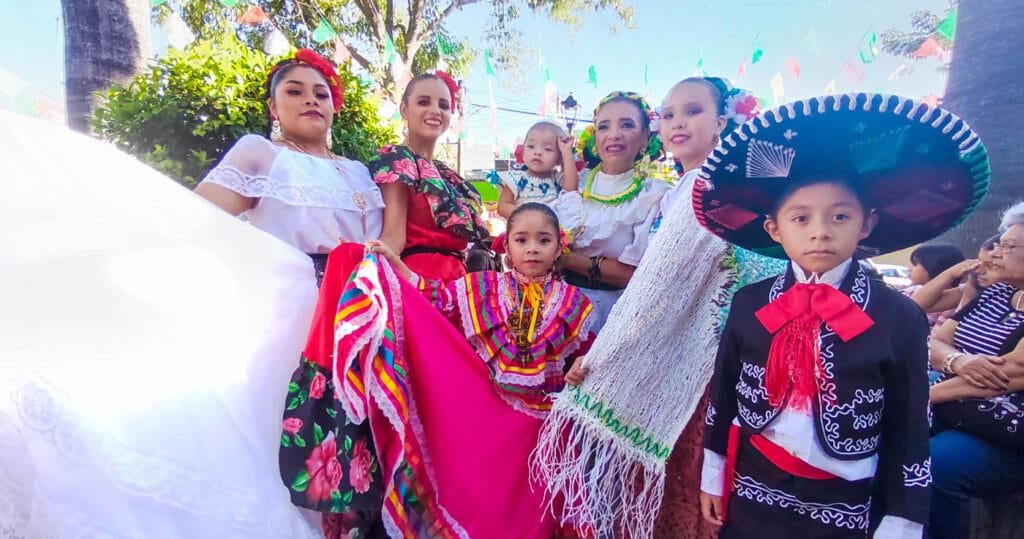
In recent years, the event has broadened its scope: various neighborhoods and community groups in Ajijic participate, each representing other local traditions such as Day of the Dead, Carnival, the Feast of Our Lady of Guadalupe, San Sebastián, the Day of the Holy Cross, Las Posadas, and of course, the patriotic September holidays. This evolution has turned the parade into a vibrant showcase of the town’s rich cultural diversity.
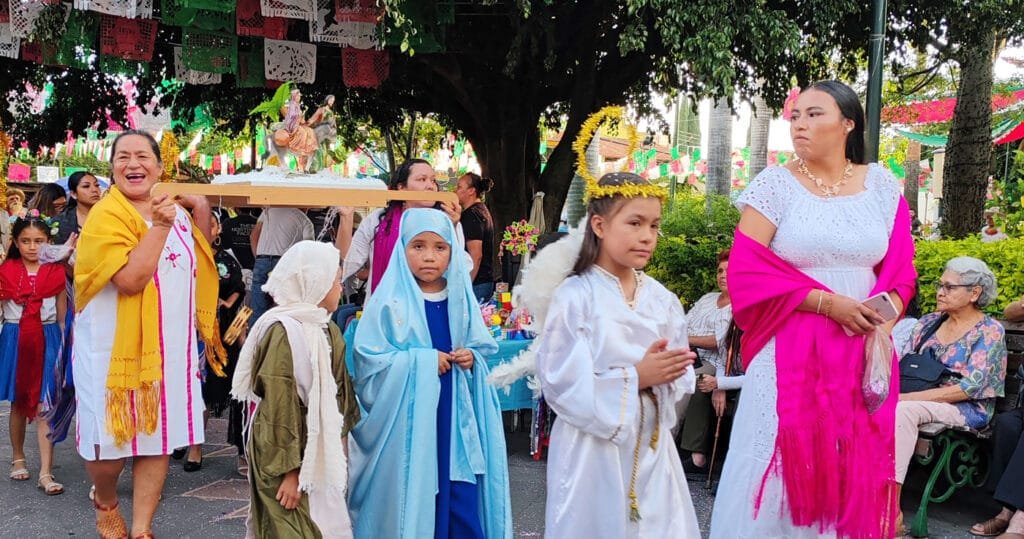
Each group arrives with music, flowers, flags, and traditional characters, taking their place in the plaza’s walkways before parading around the central gazebo. Women proudly model their rebozos in an atmosphere brimming with excitement, color, and the unmistakable soundscape of Mexico. The gazebo becomes the symbolic heart of the celebration, around which the spirit of the town revolves.
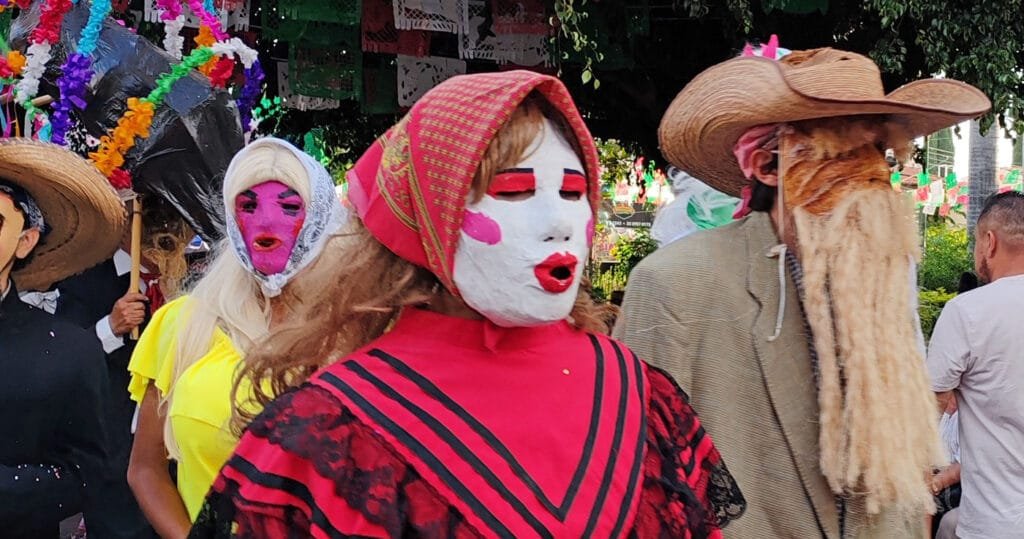
What makes this parade especially meaningful is that it’s not designed as a performance for tourists. It’s a sincere celebration of Ajijic’s customs. Families prepare their outfits weeks in advance and organize into neighborhood teams, strengthening community bonds. It’s a festival of the people, by the people—open to anyone who wishes to take part.
Celebration, Applause, and Unity

The event culminates in a friendly competition among the most striking or meaningful rebozos. Although three are formally recognized, all of them are worthy of admiration. Judges consider not only the beauty and craftsmanship of each piece but also the story behind it—some are heirlooms passed down through generations; others are woven especially for the event.
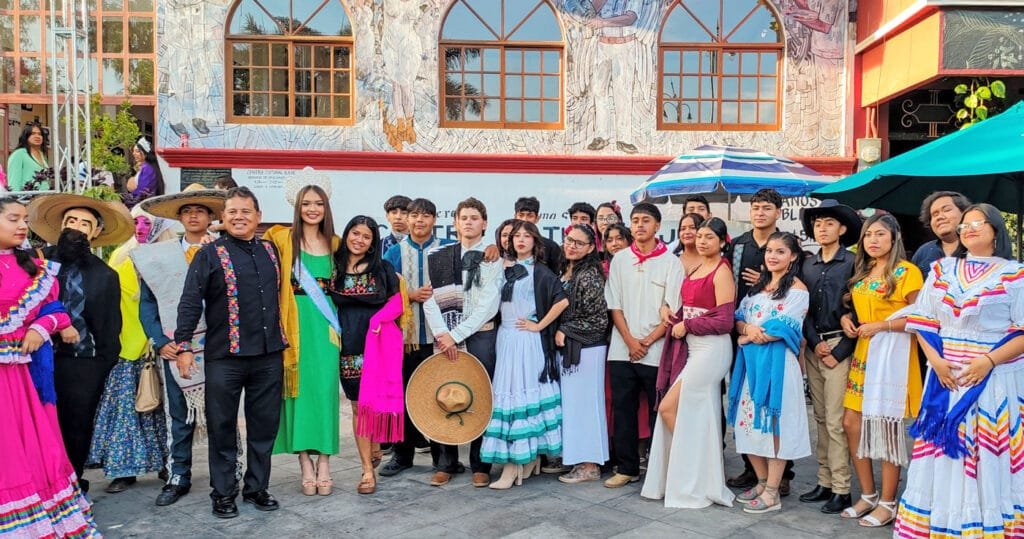
A group photo is then taken in front of the Ajijic Cultural Center, capturing the moment as part of the town’s living history. This image, shared on social media and local news outlets, becomes an annual symbol of Ajijic’s deep love for its traditions. It’s an emotional closing act that strengthens the collective sense of belonging and cultural continuity.

The competition doesn’t create rivalry—it sparks mutual recognition, celebrating creativity, effort, and pride in one’s heritage. Hugs, happy tears, and inclusive applause are common. There’s no distinction between winners and participants. Everyone contributes to the soul that keeps this tradition alive.
Support a Tradition Made by and for the People

This event is entirely non-profit. It happens thanks to the efforts of volunteers, cultural authorities, and the deep affection of the community. You can support it by donating, lending a rebozo, helping with logistics, or simply sharing this tradition on social media. Every act of support helps keep alive a custom that defines Ajijic’s identity.
Year after year, organizers face the challenge of raising funds, coordinating dozens of participants, and promoting the event on a modest budget. But what never fades is the passion of those who make it happen—and the community’s commitment to safeguarding its essence. Just attending, even as a spectator, is already a way to participate.
Want to experience this event like a local? If you’re in Ajijic in September, be sure to head to the plaza around 5 p.m. on the day of the parade. Bring your camera, a small umbrella in case of rain, and your festive spirit ready to celebrate. And if you have a rebozo, bring it—it’s your passport to a living tradition.
Want to Discover More Traditions in Ajijic?
If the Usos y Costumbres del Rebozo celebration sparked your curiosity, there’s so much more to explore. Ajijic honors its heritage all year long through colorful festivals, traditional dances, and heartfelt community rituals. From Day of the Dead altars to Christmas posadas and fireworks-filled fiestas, each event is a window into the soul of the village. Dive deeper into the cultural heartbeat of Ajijic in our article: Festivals and Traditions in Ajijic.
Stay Steps Away from the Heart of Tradition
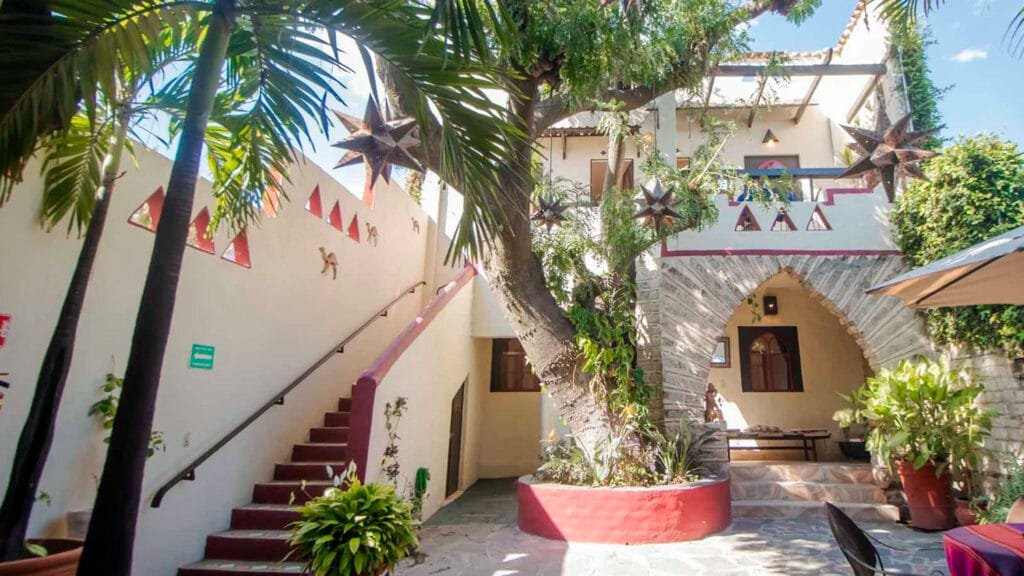
At Hotel Casa Blanca Ajijic, we offer the perfect location to immerse yourself in this authentic experience. We’re just a short walk from the main plaza. Relax in our Moroccan-inspired rooms, enjoy breakfast in our charming courtyard, and become part of one of the town’s most beloved traditions.
After the parade, you can stroll back to rest—no traffic, no rush. Take in the town’s vibrant atmosphere, browse local crafts, and savor delicious street food nearby. By staying at Casa Blanca Ajijic, you’ll tune into the cultural rhythm of the village from the very start.


